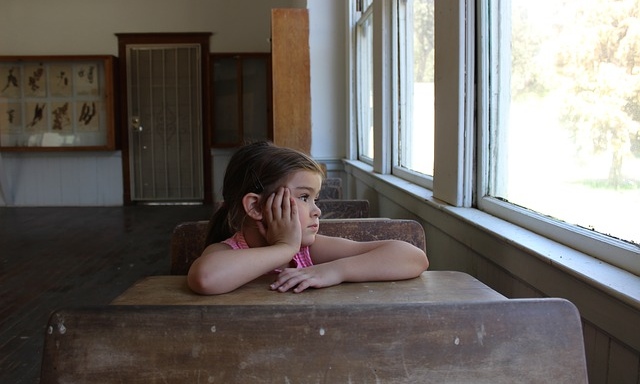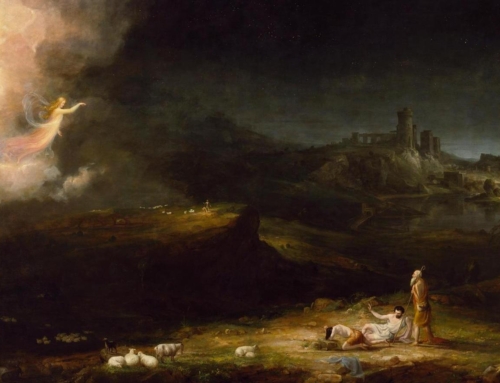…work bears a particular mark of man and of humanity…in a sense it constitutes its very nature. -Pope St. John Paul II, Laborem Exercens (1981), Preface
People need to work. Lazy summer teaches us that even relaxation has its limits. When we’ve reached the point of restlessness, we’ll seek out the task of building campfires and skimming the swimming pool. Doing so staves off boredom and maintains our sense of purpose. It gives us something to do with ourselves. Nevertheless, we can experience an attitude of loathing toward any kind of sustained work. As much as it provides a sense of accomplishment and dignity, and wins for us our daily bread, we feel more or less acutely the “curse” ascribed to our work in this fallen world. Happily, we can come to better understand this puzzling condition, and even grasp a higher hope for work, by meditating on the creation account in Genesis in light of the life and mission of Christ.
Well-known is the curse on work which resulted from Adam and Eve’s transgression. To the woman God exclaims, “I will intensify your toil in childbearing; in pain you shall bring forth children.” And to the man: “Cursed is the ground because of you! In toil you shall eat its yield all the days of your life” (Gen 3:16-17). By committing the first sin, the man and woman revolted against the natural order and their place within it. Consequently, they experienced a similar falling-out among the things under their own command. Just as they rebelled against God, so did nature grow unruly toward them. Work became toilsome. Hence the loathing, tiredness, injury, and lack of inspiration (not to mention the social difficulties) which are unavoidable in the workplace–both then and now.
Of course, this was not part of the Creator’s original plan. Early in Genesis, we read: “The Lord God took the man and settled him in the garden of Eden, to cultivate and care for it” (Gen 2:15). God cared for man, and man for the earth. After God delighted in each part of his creation, he took care to see that the man had a suitable helper. Along with his “helper” (denoting shared work), whom he named Eve, Adam exercised an authority in the garden mirroring that of God his creator. Having wielded this authority over every creature (symbolized by the action of naming them), Adam named the woman. His reaction here was very different: “This at last is bone of my bones and flesh of my flesh” (Gen 2:23). Adam rejoiced at the presence of the one with whom he shared his humanity and the very “image” of God (cf. Gen 1:27). And the couple would work together–tilling, cultivating, and exercising authority–in imitation of the joyful Worker in whose image they were made.
As their descendants, we inherit the same nature and its inherent dignity–we too are made in the image and likeness of God–but in our toil we often forget this, and the meaning of our work. Our advanced scientific and technological capabilities place us in an even more dramatic position of dominion over and responsibility for nature. And as Adam and Eve were meant to “till the soil,” we too possess a productive capacity and experience delight when things turn out right. All this is a clear imitation of the Creator as he is portrayed in Genesis. Inasmuch as it imitates the creative knowledge and power of God, our work too is brilliant and impressive–from the skilled physician and the healing pharmacist (cf. Sir 38:1-8) to the craftsmen who “keep stable the fabric of the world” (Sir 38:34).
But doesn’t sin often prevent us from measuring up to this ideal? To alleviate our burden, the divine Worker has come a step closer. Jesus Christ reaffirmed the value of human work by living and working at our side as the son of a carpenter. So shaped was his humanity by this experience that we see Jesus readily using the example of workers to teach about the Kingdom of God (e.g., Jn 15:1). Of course, this became Jesus’ greatest work: announcing and establishing the call “back to God” away from sin and its effects. The labor of preaching was the “food” by which he lived and also the craft he passed on to his disciples (cf. Jn 4:34). The Cross, with its wood and nails, became the signpost that gave the toil and suffering of work incalculable value for him and his followers.
Remembering the account of Genesis reveals our great dignity and responsibility in being workers after God’s own image. And despite the toil which taints our experience of work, Jesus’ labor at Nazareth and his tiresome way of the Cross not only save us but also make the suffering involved with work potentially very powerful. After a summer break, we can go back to work with pride and hope–hope that in addition to concrete benefits, work can have spiritual value (Phil 2:12). In the words of St. John Paul:
In work, thanks to the light that penetrates us from the Resurrection of Christ, we always find a glimmer of new life, of the new good, as if it were an announcement of ‘the new heavens and the new earth’ in which man and the world participate precisely through the toil that goes with work. (LE, § 27.5)
✠
Image: A child at school







